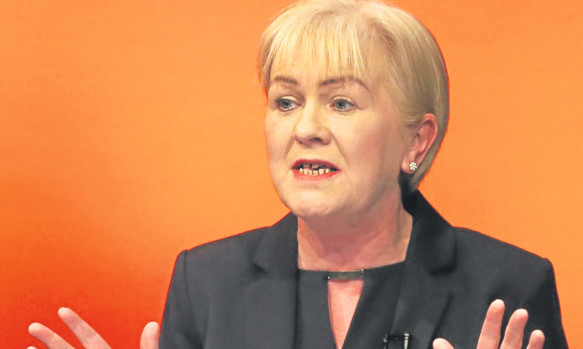
Labour’s plan to hand more powers to Holyrood has come under fire from both a former First Minister and the man dubbed the Godfather of devolution.
The party last week unveiled its bid to woo voters away from the SNP and independence with a shake-up of devolution, including the ability to vary income tax by 15p in the pound.
But former Labour First Minister Henry McLeish yesterday told the Scottish Labour conference he was disappointed the plan did not go further.
And Canon Kenyon Wright, who chaired the Constitutional Convention that led to the creation of the Scottish Parliament, described the proposal as a “feeble infant”.
The party’s package of measures, which includes more powers for local councils and devolving housing benefit, has been met with a mixed response.
Labour chiefs claim the plan, which is likely to hit the highest taxpayers hardest, will give them a solid base to get working class Scots on-side for both the referendum and the forthcoming Westminster and Holyrood elections.
In her speech to Scottish Labour’s conference yesterday, leader Johann Lamont insisted the measure produced by her devolution commission were “powers for a purpose”.
But Mr McLeish, who was Scottish Labour leader and First Minister between 2000 and 2001, said the party has not gone far enough.
He said: “I think the party has taken a step forward in publishing the outcome of its constitutional deliberations. I’m slightly disappointed because I think it could have gone further.
“There is no consensus in Scotland. The parties and the public are divided. We have got to spell out what a No vote actually means.
“A Yes vote is obvious. If it’s a Yes vote on September 18 then it’s back to the day jobs and we’re moving in a different direction.
“But a No vote could mean many things to many people and I think we have got to try and clarify that.”
His thoughts were echoed by one of the founding fathers of Scottish devolution. Canon Wright said: “So Labour joins the procession of those offering a variety of ways in which a No vote could be followed by more devolution.
“Has it really laboured for two long years, only to give birth to this feeble infant? I just can’t see that people would be left anything other than confused by what they are offering.
“On the real content, there is a confusion which this document shares with the Scottish Government’s White Paper. Both confuse powers and policies.
“Some of the proposals are for future constitutional changes in the powers of Parliament, but many others are about what Labour would do with these powers. That is about policies.”
The Scottish Labour report published last week proposed that the role of the Scottish Parliament and local government will be enshrined in law.
But Canon Wright said this was a “glaring mistake which is at best inconsistent and at worst ignorant and which devalues the entire case”.
He added: “They propose the constitutional entrenchment of Scotland’s powers, but I am astonished at the short memory of those who were my close colleagues in the Constitutional Convention.
“Have they forgotten that we were ‘adamant’ on such entrenchment and tried long and hard to achieve it?
“It proved impossible, because under the UK constitution, no parliament can bind its successors.
“The Commission report seems blissfully unaware of that fact.”
In her address yesterday, Ms Lamont said:“The question for us today is how we strengthen the union and lay the foundation for further achievements in the 21st Century.
“Nationalists tell us to have the confidence to leave the United Kingdom. I say to Scotland have the confidence to lead the United Kingdom.
“What we propose is a new power-house Scottish Parliament. We will introduce new Scottish progressive rates of income tax, so that the Scottish Parliament can increase the rates of tax in the higher and additional bands.
“This will mean that the Scottish Parliament will be able to make our tax system truly progressive.
“We are therefore committed here in Scotland to raising the income tax paid by those earning over £150,000 from 45% to 50%.”

Enjoy the convenience of having The Sunday Post delivered as a digital ePaper straight to your smartphone, tablet or computer.
Subscribe for only £5.49 a month and enjoy all the benefits of the printed paper as a digital replica.
Subscribe